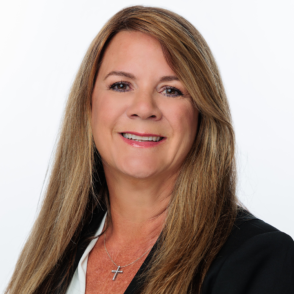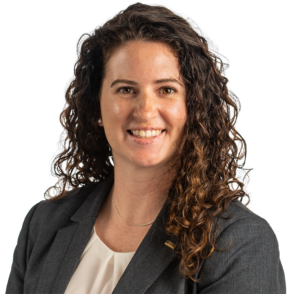By Paul G. Smith, Corporate Senior Vice President, Carrier Relations, H.W. Kaufman Group
As the world begins to emerge from the COVID-19 pandemic, it is abundantly clear, the “new normal” will reshape all of our organizations. One of our many goals is to keep you updated on the rapidly evolving insurance marketplace where adjustments have arguably never been more fluid. The confluence of so many impactful variables (several noted below), more than ever underscores the importance of transparency and partnership to meet client needs:
- Post COVID-19 opening of economies
- Mergers & Acquisitions as well as initial Public and Private Offerings
- Unprecedented Cyber threats and attacks
- Aggressive start to CAT season with above average expectations of wildfires, convective & named storms
- Influx of non-traditional capital
- Insurers continuing to seek rate increases and other underwriting means to sustain profitability
Our Property & Casualty Market Overview & Forecast will delve into these important matters and more with a strong emphasis this quarter on Personal Insurance, Commercial Property and Brokerage Casualty. Our subject matter experts will weigh in with their expert advice and outlook based on their daily interactions and pulse of the current environment. We will also revisit other key sectors previously reported with updates on Environmental, Transportation, London, Canada and more.
RATE
It is important to view this topic in the context of the many variables that will impact or affect the outcome. Factors such as line of business, size of account, individual loss history, and specific risk factors such as location or industry classification create nuances disallowing “broad brush” or sweeping generalizations. Our subject matter experts have provided insights into some of these nuances with guided caution that individual risk underwriting and a general market trend of selective underwriting will continue to result in general rate increases with variables and special considerations considered as appropriate.
Certain lines of business lead the pack irrespective of noted nuances such as Cyber, Umbrella/Excess Casualty, CAT prone property coverages and select professional liability lines.
Underscoring this view are two important proxy indicators:
- The Council of Insurance Agents & Brokers (CIAB) in a recent pricing report revealed premiums for large accounts increased 12.9%, followed by 10.9% for medium-sized accounts and 6.3% for small accounts. In addition, some lines of business have shown major increases, with umbrella and cyber seeing double-digit increases close to 20%.
- Surplus lines premiums as reported by various stamping offices exceeded $24 billion in the first half of 2021 despite the COVID-19 pandemic, representing a 21.9% increase over the same period in 2020 with transactions increasing by 7.2% during the same period compared to the year prior.
CAPACITY
New entrants, evolving and expanding incumbents and non-traditional capital entering the marketplace underpin no scarcity of capacity, a major difference in this hard market cycle compared to many of the past. Generally speaking, all placements can be completed with sufficient capacity and limit to fulfil client requirements, however that generally comes at a cost in the form of both rate increases and carefully considered coverages (more to follow on this aspect within the terms and conditions section which is
next).
As earlier reported, Carriers are generally becoming more selective in their underwriting appetite and devoting resources and capital to areas where they see market opportunity based on anticipated returns and market need. Insurers continue to regularly refine their appetite in the never-ending quest to drive improved results. To a degree it’s the tale of two worlds as during the writing of this report we are witnessing two well-known global E&S insurers with complete contrary outlooks on the same line of business, one is exiting while the other is entering. While time will tell who made the better decision, the point being is that Carriers large and small are refining their positions based on deep rooted quantitative analysis resulting in ebbs and flows of capacity, nothing so draconian that deals cannot be completed.
TERMS & CONDITIONS (T&C)
We have been discussing the intense management of exposure by Insurers through careful crafting of policy terms and conditions for some time now. Carriers are looking well beyond rate to return to traditional underwriting profitability using every tool they have including careful considerations of coverage extensions which were once considered automatic, deliberate utilization of specific peril related deductibles, sub limits and more. As substandard business continues to correctly return to the Specialty and E&S sector, Carriers are underwriting to new and improved standards underscoring the importance of comparing policies in detail. This holds true not only on new business or changing insurers upon anniversary, but renewal with incumbents as well. Underwriting guidelines are constantly in motion, don’t assume the same Carrier equates to the same coverages, their reinsurance and other capital providers are demanding improved results.
NEW MARKET ENTRANTS
Startups:
We expect continued strong M&A activity as we head into the second half of 2021, driven by record levels of deployable capital and continued interest in insurance carriers and distribution. This is fueled to a large degree by uncertainty surrounding potential headwinds of corporate income tax increases and other regulatory challenges.
Capital is entering the marketplace via various sources from private equity to large multi-national insurers such as Japans Tokio Marine. We saw them acquire Pure Insurance and renewable energy MGA GCube in early 2020 as they complimented their global portfolio without “cannibalizing its own business through dis-synergies that often come with M&A,” said Chris Williams their co-head of international. We anticipate this trend to continue with specific emphasis in the U.S. where the underlying economy has improved far greater than any other part of the world post pandemic resulting in greater demand of risk transfer.
Previously reported start up Insurer Vantage recently announced its acquisition of a U.S. surplus lines insurer as it expands into the lucrative non-admitted market. The insurer has been rebranded as Vantage Risk Specialty Insurance Company and will carry an A.M. Best rating of A-. This follows Vantage entering direct business in May by partnering with a U.S. P&C carrier, which allowed Vantage to write coverage in select lines in all 50 states. Vantage CEO Greg Hendrik added “These transactions continue our planned growth trajectory and reflect our commitment to underwriting business where existing capacity is shrinking, leveraging our opportunity in the specialty insurance marketplace.”
Finally, the fairly recent phenomena of the culmination of Insurance and Technology labeled “Insure-Tech” is also rapidly evolving, primarily in the area of direct-to-consumer digital platforms. Insur-Tech Kin as example is set to go public on the New York Stock exchange as a Special Purpose Acquisition Company (SPAC) with a pro-form valuation exceeding $1bn. Initial funding is backed primarily by private investors, hedge funds and Insurance Linked Securities (ILS). Reports indicate negotiations are underway for them to acquire an inactive insurer licensed in more than 40 states allowing them to begin writing business imminently.
Expanded Appetite:
Several well-established insurers have expanded into new horizons in an effort to take advantage of market conditions, diversify their portfolio and attract new buyers in areas where they have not historically participated:
- Western World is entering the Garage contract bind marketplace as announced early July. Tim Whisler who heads up the AIG unit stated such a shift “reflects the company’s continued commitment to address market needs, strengthen relationships and deliver differentiated value to our partners and clients.” Although the operation is not slated to start transacting business until late 2021 or early next year, the pivotal move demonstrates the actions being taken by insurers both new and more mature, such as AIG, to best position themselves into expanding market opportunities.
- James River on the other hand is expanding beyond their well-known brokerage operation as they move into Contract Binding Authority. Like most Carriers, it is a portal-based system that will initially be focused on specific Casualty lines in 44 states. While it may appear limited in scope with pre-selected class codes, it does include some interesting classes such as vacant property/building, premises LRO, warehouses, artisan contractors, truckers and more.
Q2 OVERVIEW & Q3 FORECAST (US)
There is good news for the special insurance market more than halfway through 2021. Many businesses have opened back up across the U.S. and around the world. Yet the third quarter is often a challenging one in our industry with hurricane season upon us and the continuing threat of wildfires, floods and heavy winds causing significant damage to commercial and personal properties.
Fortunately, Burns & Wilcox is well positioned to “weather” these storms both literally and figuratively. Supply remains tight in some areas but is stabilizing in others. The relationships we have developed with carriers serve us well in supporting broker and client needs, and we continue to develop partnerships with companies and organizations designed to help limit risk.
Our industry leading subject matter experts dissected the marketplace and provided insights on the Burns & Wilcox Eye on Q3 2021: Specialty Insurance Overview webinar, hosted July 15, 2021. They provide further guidance as follows delving deeper into specific areas with advice and outlook.
Click here to view the complete webinar.
Personal Insurance:
Exposure remains an issue, and likely will for the foreseeable future with hurricanes, wildfires, floods, and the like not going away, said Anella Niewenhous, Associate Vice President, Regional Practice Group Leader, Personal Insurance, Burns & Wilcox, Morehead City, North Carolina. However, there are some themes that allow us to address broker and client needs more efficiently.
There continues to be a focus on profitability, which is forcing carriers to raise their rates. At the same time, they are also auditing more policies, which gives greater authority to wholesalers that offer experience and have shown loyalty.
“Many carriers are shifting towards coastal exposure and higher TIVs” Niewenhous said.
Carriers are also placing a large emphasis on special deductions like water damage, wind and wildfire deductibles and sub-limitations to mitigate future claims, she added.
In addition, moratoriums are being placed earlier and lasting longer. Some carriers even placed moratoriums days before Hurricane Elsa made landfall and that is likely a trend that is here to stay in the short-term, with three to five large hurricanes still being predicted this calendar year.
“I think carriers are trying to better prepare themselves,” Niewenhous said. “It allows them to pivot (to) increase rates (while changing) underwriting guidelines.” Like other areas of the market, data analytics play a major role.
While capacity remains tight, Burns & Wilcox has been able to secure additional capacity in certain markets, even in high-risk states like California and Florida, as a result of our underwriting abilities. “That speaks to the longevity of the industry relationships we have built,” Niewenhous said.
The Burns & Wilcox Personal Insurance Practice has been hard at work answering the call of our clients. Where there has been a void created in the marketplace our experts have leveraged our relationships to find much needed solutions. For example, Burns & Wilcox recently introduced an Exclusive California Premium Wrap Program. In addition, we released a Homeowners Program through our sister company, Atain. This exclusive product is only available to Burns & Wilcox appointed agencies and within California.
Helping insureds mitigate risks whenever possible is key. Within the last year, Burns & Wilcox established a relationship with Flo by Moen to help better manage water and flood damage that can occur in a home. Water damage is one of the most common claims by homeowners, Niewenhous said. Flo by Moen products can detect leak and automatically shut off water in emergencies.
In addition, Burns & Wilcox works directly with Wildfire Defense Systems, a national leader in insurer wildfire services, combining professional wildfire consulting with federally certified emergency response wildfire suppression services. This relationship saved Burns & Wilcox about $20 million in claims in 2020, Niewenhous said.
Lastly, Cyber continues to be an area of emphasis both within professional liability and personal insurance. Through our sister company, Node International, Burns & Wilcox agents have access to Cyberman365, an exclusive program that offers personal lines insurance to insureds and services linked to identity theft protection for individual fraud resolution, data breach response and related services.
For more information, click here to view our Personal Insurance video highlight.
Commercial Property – Binding Authority:
Burns & Wilcox has underwriting authority for property and casualty, inland marine, professional liability, and excess casualty, which is for premiums from around $500 to $35,000, and we excel in contracts under $3 million, says Rich Gobler, Corporate Senior Vice President, Managing Director, Burns & Wilcox, San Francisco, California.
Catastrophic-exposed property is in the middle of a hard market, especially for wind, hail, and brush exposed areas of the country, Gobler said. Coastal areas still can be a challenge given the threat of storms, so most property carriers are raising premiums.
Costs are also increasing in non-catastrophic (non-cat) property areas, but firm underwriting requirements remain, with few carriers willing to handle fuses or other specialty underwriting needs. Capacity is more readily available for non-cat policies yet can still be tight even for low-risk policies.
On the casualty side a lot of business is being shed from the standard markets with prices stabilizing and a firming of underwriting requirements. Habitational and other pockets in casualty are seeing a true hard market.
Still, Burns & Wilcox has aggregate in coastal and brush areas based on the strong relationships we have with the market, including being the largest Lloyd’s of London cover holder in the U.S., Gobler said. One of the biggest strengths is the in-house binding capabilities we have with Atain, an A-rated insurance partner which can help streamline the process for our brokers.
There are other risks in contract binding as well. An increasing number of experienced professionals have authority to handle contracts of under $3 million, however specialized areas can be difficult. Gobler said Burns & Wilcox is having success with such areas as wind, hail and brush coverage that can be difficult for most wholesalers.
As 2021 progresses, contract binding carriers will further tighten underwriting requirements while increasing rates. The market will remain firm and the flight to quality underwriting will increase in importance. There should also be a continued increase in both property and general liability rates.
Additional notes:
- Exclusions for assault and battery and sexual abuse and molestation are on the rise.
- More firearm limitations are in place because of mass shootings and active shooter exclusions are also increasing.
- Aggregate constraints exist on the East Coast and other higher risk areas.
For more information, click here to view our Commercial Property Insurance video highlight.
Brokerage Casualty:
Compared to the summer of 2020, the market is stabilizing. There is more capacity although not at the level of pre-pandemic levels, said Adrian Smith, Managing Director, Broker, Casualty, Burns & Wilcox Brokerage, Chicago, Illinois. There is a more orderly marketplace and signs of hope on the horizon, he added, even though carriers are deploying fewer limits per risk.
Within the insurance industry, data analytics are playing a key role, with more data driven decision making by underwriters and a cost of capital mindset.
Gone are the days of $25 million limits freely being offered. E&S Specialty insurers have cut back their limits to $5M increments. Tougher classes, such as construction projects in New York or long-haul trucking, are offered only $1M or $2M capacity on a lead umbrella basis.
The major reasons for these reduction in limits include social inflation, nuclear verdicts (defined as verdict over $10M), and litigation funding.
There are venues around the country which are particularly problematic (for example Louisiana & S. Florida) and also State Laws (such as Labor Law in New York) which can limit the amount of insurance capacity available.
Risk management business (over $500 million in sales) has been hit the hardest with larger umbrella increases compared to small to middle market business.
Anything with a heavy wheels exposure in the umbrella excess space is also difficult, “Smith said. “Being creative and exploring different retentions and primary structures can be a way to find excess pricing that is more palatable.”
We are also seeing more quota sharing of layers, particularly higher up in excess towers where stretching out the limits can make more sense.
For more information, click here to view our Brokerage Casualty Insurance video highlight.
Professional Liability:
The Professional Liability & Cyber risk marketplace continues to operate in a hardening environment.
Cyber:
According to AM Best analysts, insurers “urgently need to reassess all aspects of their cyber risk, including their appetite, risk controls, modeling, stress testing and pricing, to remain a viable long-term partner dealing with cyber risk.”
The industry loss ratio for standalone Cyber Insurance rose in 2020 to 73% compared with an average of 42% for the previous five years (2015-2019). Insurance carriers and MGA’s continue to restrict capacity and coverage while increasing rates in the double digits. Insurers continue to pursue more stringent cyber security and compliance requirements from applicants specifically around ransomware threats and electronic funds transfer procedures.
The Cyber Insurance market was valued at roughly $8 billion in written premium in 2020 and expected to double by 2025.
“Growth in this segment will be fueled by continued adoption from first time buyers, capacity and coverage increases from existing policyholders, and further pricing corrections as dictated by the market,” said David Derigiotis, Corporate Senior Vice President, National Professional Liability Practice Leader, Burns & Wilcox, Detroit/Farmington Hills, Michigan.
Medical:
AM Best notes the Medical Professional industry was entering its seventh straight year of poor loss performance prior to the pandemic. 2020 brought concerns over increased litigation related to the failure to provide a safe environment for patients and employees, delays in diagnosis or treatment, as well as staff and equipment shortages relating to effective patient care. As a result, carriers applied greater underwriting scrutiny combined with coverage and capacity restrictions. Several markets have also exited the Hospital and Skilled Care spaces, however this has been somewhat offset by new entrants.
While rates vary based upon specific services provided and territory, it is noted that between 2010 and 2018 premium increases typically ranged from 12% to 17%. In 2019, that figure increased to 26% and went up again in 2020 to more than 31%.
“The full claims impact and overall loss performance for medical professionals may not be realized for several more years due to patients delaying screenings and needed medical procedures during the pandemic,” said Greg Wideman, Manager, Healthcare, Burns & Wilcox, Pittsburgh, Pennsylvania.
Many carriers are anticipating and preparing for an uptick of reported claims alleging failure or delay in treatment or diagnosis. Insurance carriers may receive partial reprieve as Federal laws have offered some limited protections from liability for volunteers in the Coronavirus Aid, Relief, and Economic Security (CARES Act) in addition to states implementing executive orders or legislation providing liability protections for medical professionals and facilities.
Management Liability:
This particular segment has faced multiple challenges such as increased rates and retentions, class action and derivative lawsuits as well as a number of lawsuits associated with special purpose acquisition companies (SPACs). SPACs have experienced significant growth with 248 initial public offerings in 2020, compared with 59 in 2019. As of June 2, there were 330 in 2021, according to SPACInsider.
“Although the D&O market has experienced significant hardening, we have seen nearly 12 new writers enter this space across the domestic and London marketplace offering new capacity while looking to capitalize on hard market conditions,” said Derigiotis. Rate increases are still in the double digits, but are down slightly when comparing Q1 2020 increases vs. Q1 2021.
Transportation Insurance:
“During the first six months of 2021 we have seen a very robust Transportation Insurance market. While the first quarter showed significant improvement in renewal retentions and new business opportunities, the second quarter resulted in growth more than twice that of the first quarter,” said William Mills, Director, Transportation, Burns & Wilcox, Salt Lake City, Utah. “What was interesting is that while growth was exponential, we witnessed a moderation in rate increases and carrier underwriting restrictions.”
“Rumors” suggest some carriers have seen a flattening of loss results, however it is too early to substantiate these results in either the short or long term. What we may be seeing is carriers feeling more comfortable at the current rate levels. A desire to regain pre-pandemic premiums levels for those carriers that have performed better is also most certainly driving a desire for growth. Those insurance carriers that have continued to struggle on the bottom line will continue to take rate action and restrict writings to try to improve results.
Insurance carrier actions have played a key role in production growth, but the key component has been exposure growth by transportation operators. Many of the exposure units removed during the pandemic are being added back and in many cases, additional units are being purchased due to business growth.
We are also seeing an increase in new ventures that were non-existent during the pandemic. Unfortunately, some carriers have become much more reluctant to pursue these new ventures than previously.
The first six months suggest the balance of 2021 could be one of the best years for this segment in a long time. Unless loss results or some new regulation spooks the industry, we should see rates that fluctuate within a narrow window. Economic growth will spur continued exposure increases and new business opportunities that bode well for the transportation industry.
Environmental Insurance:
“The Environmental Insurance market remained strong and stable in Q2 with a similar outlook for Q3 projected. We are seeing a rebound in Mergers and Acquisitions and construction following delays due to COVID-19, which are driving increased need for Contractors Pollution Liability, as well as wraps, and overall environmental placements,” said Gina Jones, Vice President, Director, Environmental Programs, Burns & Wilcox, Denver, Colorado.
While there is an increase in environmental placements, premium and rate continue to be soft.
COVID-19 impacts are still being evaluated. As expected Environmental Insurance carriers, continue to include a COVID-19 / Communicable Disease exclusion relative to bacteria, viruses, and communicable diseases. Environmental carriers continue to provide affirmative coverage for mold and legionella and may provide coverage for decontamination costs.
Emerging trends and concerns affecting the current market continue to be:
- Forever Chemicals / PFAS for their potential danger to human health and the environment
- Glyphosate (Roundup) continues to be a concern with several related lawsuits pending or active resulting in many carriers attaching a glyphosate exclusion
- Due to the real estate vacancies as a result of the COVID-19 pandemic, legionella and mold claims have risen. Mold claims have consistently increased over the past few years and have had a major impact on the marketplace.
- Climate change and more frequent, severe weather: The past few years have been the warmest on record, which is why natural disasters are becoming more frequent and intense. Severe weather, including wildfires, flood, and windstorms have caused severe environmental impact releasing pollutants into the environment, such as fuel, animal waste, sludge, chemicals and more.
Q2 OVERVIEW & Q3 FORECAST (CANADA)
Personal Insurance:
The insurance market continues to tighten, especially within the lines of hard-to-place and high-value homeowners. Carriers are cautious as to the type of risks they are accepting, closing or tightening appetite, or even shifting focus. As a result, retail brokers are approaching the MGA marketplace and Burns & Wilcox has been able to secure terms for clients requiring solutions for these difficult-to-place risks.
“We have seen increased submissions for Airbnb and short-term rentals, as well as homeowners submissions with multiple mortgages and non-standard mortgages,” said Wendy McCormack, Senior Underwriter, Personal Insurance, Burns & Wilcox, Toronto, Ontario. “This uptick is likely due to the growing number of shuttered businesses and loss of jobs throughout the pandemic.”
In addition, due to the current real estate market, we continue to see vacant home submissions. As a specialty of Burns & Wilcox, we are successfully able to tailor policies for clients.
Professional Liability:
Market capacity for Private Company D&O has diminished while the demand is higher than ever. We expect this trend to continue into the remainder of the year, but Public D&O sector opportunities have become readily available. Many risks have been placed by Burns & Wilcox in the Primary and Excess D&O space with domestic markets.
During the first half of 2021, Burns & Wilcox has been very successful in placing Cyber risks as the increase in demand has continued. We have seen markets become more stringent in requiring that insureds comply with data protection protocols and will decline or non-renew if they are not satisfied.
“As businesses continue to open up, we are seeing many opportunities in the Health and Wellness sector,” said Danion Beckford, Senior Underwriter, Professional Liability, Burns & Wilcox, Toronto, Ontario. “Burns & Wilcox has seen great success in placing this business.”
Property & Casualty Insurance:
As we continue to proceed through 2021 the Canadian market has not changed significantly since the start of the year. Property capacity continues to drive the market and brokers are searching for more parties to help fill lines. We are starting to see a pull back from the aggressive rate increase we saw in 2020. Markets are now holding steady at 5-10%, however this could change when looking at more difficult classes.
The liability market continues to have similar trends. Certain sectors are finding it difficult to find the required limits and premiums are continuing to rise. Brokers should continue to expect price increases upon renewal and if the account has had claims, do not anticipate an easy renewal.
We are anticipating an uptake on small to medium risk in the next few months now that restrictions are starting to ease, and we move back to more normalcy.
Burns & Wilcox continues to have great success as we maintain capacity, provide solutions for brokers on difficult accounts, and provide superior service for our clients. “Service and expertise means so much in this marketplace and we continue to win accounts because of our dedication to clients,” said Tyson Peel, Vice President, Director, Property & Casualty, Burns & Wilcox, Toronto, Ontario.
Q2 OVERVIEW & Q3 FORECAST (UNITED KINGDOM)
Consistent with the overall U.S. E&S market, the London market continues to reflect tight capacity with increasing rates on property business across much of the U.S. and Canada. Particularly in the binding authority segment, capacity remains very tight in key U.S. geographies, such as the Southeast and wildfire-exposed areas of CA, while Quebec and the Atlantic Provinces remain challenging in Canada.
Overall, a majority of syndicates have not released new aggregate into the binding authority market—a function of annual premium income limits, cost of reinsurance, or a further ‘wait-and-see’ approach with increasing rates.
A few Lloyd’s syndicates have received approval from Lloyd’s to increase their premium writings beyond those outlined in the syndicates’ initial 2021 business plan. However, only those syndicates that have achieved results consistent with their business plan, and are showing signs of achieving target rate increases, are obtaining Lloyd’s approval to increase their premium income limits in 2021. We do not expect this to have a significant impact on the U.S. or Canadian property market this year.
The London open market continues to be very active with larger property risks, with continued strong submission flow. As stated earlier in the year, much of the new capacity provided by Lloyd’s syndicates has been deployed in the open market. Additionally, we have seen a number of new London market carrier entrants deploy capacity into the open market for larger property risks. As a result of this new capacity inflow, we are seeing rates flatten in the open market in some cases, and in other cases, seeing lower increases for renewal business that has taken double-digit rate increases over the last two years.
We do not expect to see a significant change in the London market throughout the remainder of 2021. We expect to see further capacity constraints and increasing rates in many areas of the U.S. and Canada. While we do see rate increases coming down in open market transactions, we still expect overall increasing rates and continued flow of business into the London market.
CONCLUSION / SUMMARY
While much of what we have covered may sound familiar its worth re-emphasizing as we do not see change on the horizon. Carriers were vigorously competing for market share for decades with reduced premiums and enhanced coverages so it will take time to find equilibrium despite new capacity.
Additionally, emerging exposures associated with communicable disease, cyber, geopolitical risks both domestically and abroad as well as general economic uncertainty are all contributing to a continued conservatism by carriers. All of this while the fundamental market drivers of skyrocketing jury verdicts, changing weather patterns, deteriorating infrastructures, aging and growing population all must be weaved into new modeling forecasts of insurers.
We are better aligned and prepared through niche specialization of Commercial, Personal and Professional groups that focus on an ever-increasing demand of client needs. Our teams of specialists throughout the world are working tirelessly to stay on top on this incredibly fluid marketplace ensuring your needs are always fulfilled. Our relationships with strategic carrier partners is constantly in motion with dedicated resources driving improvements and alignment in order to continue providing best in class world leading solutions you demand. Our commitment to provide nimble, unambiguous results through our unique operating model is unparalleled, without external influence who often drive short term returns. Our long-standing history and commitment to the future through innovation, technology, data, analytics and analysis drives our passion of being best. We thank you for your business and the trust you have placed in our associates.
Disclaimer: The above information has been prepared solely for the purpose of sharing general information regarding insurance and business practice management issues. These are just our opinions and are not intended to constitute legal advice or a determination on issues of coverage.














